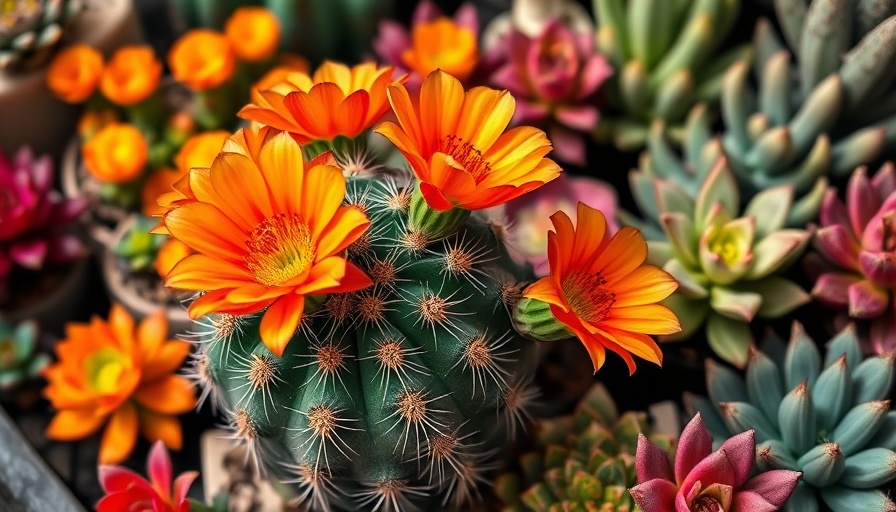
Transform Your Kitchen into a Harvest Haven This Fall
As the crisp autumn air sets in, there's no better time to start a fall kitchen garden. Picture yourself stepping outside your kitchen door and harvesting fresh Brussels sprouts for your Thanksgiving dinner—a scene that can easily become a reality with the right planning. A kitchen garden allows you to grow a variety of vegetables and herbs that not only elevate your culinary skills but also enhances your enjoyment of the harvest season.
Choosing the Perfect Spot for Your Garden
When embarking on this rewarding DIY journey, selecting the ideal location is crucial. Look for a sunny area close to your kitchen where you can easily access your herbs and veggies. Ideally, the space should receive at least 6–8 hours of sunlight each day, which is essential for most edible plants. If you have a shaded area, consider using raised garden beds. They can help warm the soil and extend your growing season, allowing you to cultivate frost-tender varieties longer into fall.
Essential Tools for Fall Gardening Success
Equipping yourself with the right tools will streamline your gardening experience. From constructing outdoor soil beds to building composting barrels and using automated watering hacks, having the right equipment is key. For instance, investing in a good quality seed starting kit can pay dividends, ensuring healthy seedlings ready to transplant into your kitchen garden.
Moreover, elevated planter boxes can be perfect for those with limited space, and they can add aesthetic value to your garden hub. By utilizing local resources, such as recycled materials or even local stores like Muskegon hardware suppliers, you can create functional and beautiful garden solutions.
Soil Preparation Techniques for a Thriving Garden
The foundation of any garden is its soil. Preparing your soil is step one in establishing a vibrant fall kitchen garden. Mix in compost to improve nutrient content and create a soil profile that promotes healthy plant growth. Using techniques like layering can also work wonders—start with a base of coarse materials and build up with fine compost and soil mixtures.
As you prepare your garden beds, illustrating planting rows can be hugely beneficial. This allows for greater organization and maximizes your growing space. Be mindful of soil drainage too; acknowledged as one of the common challenges in gardening, it’s essential for protecting your plants against root rot incidents.
Continuous Care: Monitoring and Maintenance
Once you’ve laid the groundwork, maintaining your kitchen garden is next on the list. Regular watering practices are crucial, and employing homemade watering devices can be a cost-effective and creative approach. Assess your garden daily for pests or signs of deficiencies in plant health—quick action can help save your blooms from potential disasters.
Harvesting: The Rewarding Finale
Ultimately, the joy of harvesting your own produce is the highlight of fall gardening. As you gather your edible bounty, you can plan meals around your fresh ingredients, which adds a unique touch to your home cooking. Your family and friends will savor not only the flavors but also the stories behind the food on their plates!
Get Started on Your Fall Gardening Today!
With fall just around the corner, it's the perfect time to start thinking about your kitchen garden. Remember that the journey towards building a thriving outdoor space is just as exciting as the bounty it yields. Take the first steps by preparing your site, acquiring tools, and starting plants that will flourish during these cooler months. So grab your gardening gloves and immerse yourself in the rewarding experience of growing your own food!
 Add Row
Add Row 
 Add
Add 


Write A Comment